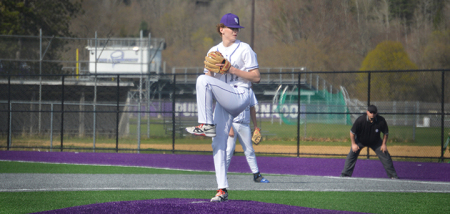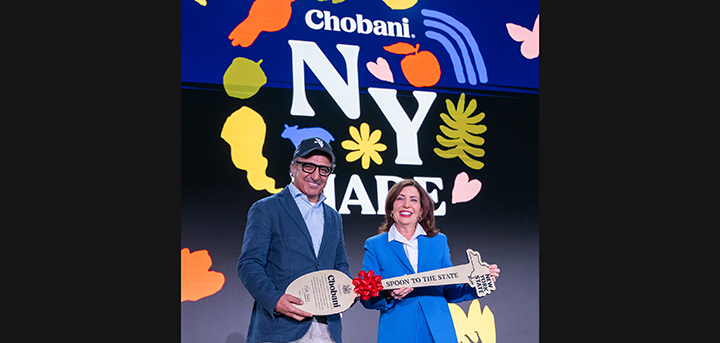How Using A Clicker Can Make Dog Training More Effective
Published:
March 30th, 2023
By:
Sarah Genter
 Clickers are a great training tool because they mark the exact behavior you want your dog to perform, which makes it very clear to your dog what you're looking for. They also sound the same each time you click them, further cutting out any confusion for your dog. Plus, they're great partners for positive reinforcement training: after marking the correct behavior with a click, you can then reinforce it by providing a reward, such as a treat. (Photo by Sarah Genter)
Clickers are a great training tool because they mark the exact behavior you want your dog to perform, which makes it very clear to your dog what you're looking for. They also sound the same each time you click them, further cutting out any confusion for your dog. Plus, they're great partners for positive reinforcement training: after marking the correct behavior with a click, you can then reinforce it by providing a reward, such as a treat. (Photo by Sarah Genter)
After writing my first column about dog training I was a little stumped on what to write about next. Not that there’s any shortage of topics, but I wanted to have a solid jumping off point.
I received a lovely email about a reader’s dog, and something they’d like to teach him. Initially, I thought I would cover that in my next column.
But then I realized, there were things that would need to be explained first in order for someone to fully understand training a specific behavior, or training a dog not to perform a specific behavior.
So I asked myself, what would I teach first to someone completely new to training their dog?
The answer was definitely clicker training. Although my own dog is pretty smart, once I got a clicker and started using it during training, she learned so much faster. Plus, using a clicker is kind of fun!
What’s a clicker?
A clicker is a small noisemaker with a button that makes a distinctive “click” sound when pressed. They’re used in training to mark a specific behavior, as well as bridge the gap between the behavior you’re asking for and the reward that reinforces it, usually a treat.
To back up a little more, in positive reinforcement training, the goal is to motivate a dog to perform a behavior, such as a sit. To motivate him, we’d give a treat every time he sits when we tell him to, whether through a verbal command or a hand signal.
The trouble with positive reinforcement is that timing is crucial.
If you get your dog to sit, and then he looks away while you’re getting the treat out, and then is given the treat, he’s going to think he’s being rewarded for looking away from you rather than sitting. By using a clicker, you tell your dog exactly what behavior you’re asking for, and that he’ll be rewarded for performing it.
Loading the clicker
But how does the dog know what the click means? Well, before using a clicker to train a behavior, you have to teach your dog to associate the sound of the click with getting a treat. This is called “loading the clicker.”
Loading a clicker is super simple. All you have to do is click, then within a few seconds give your dog a treat. Do this repeatedly at random intervals, until you notice your dog looking at you, or looking or sniffing around for a treat. This shows that he has learned the sound of a click means he’s going to get a treat, which means your clicker is now loaded!
Teaching cues
From there you can teach your dog any number of cues with the clicker. It’s important to approach training a new cue in steps. Back to the “sit” example, you don’t just want to start out telling your dog to sit, because that doesn’t mean anything to him yet!
Instead of forcing your dog into a sitting position, get him to use his brain! He’s got to work out what behavior is going to get him that treat. Hold the treat in front of his nose, then up and slightly backward over his head.
As his nose follows the treat he should sit down, but he may try to back up as well. Just pull your hand back for a quick pause, then try again. Again, get him to really use his brain and think it through. It may take a few tries, but I promise he’ll figure it out! It took close to an hour for my dog to figure out I wanted her to lay down, but once it clicked she knew exactly what to do each time afterward.
Once your dog sits down – the exact moment he sits! – click your clicker and give him a treat. This will teach your dog that sitting down specifically is what earns him a treat, thus motivating him to sit in the future, when you ask him to. After several repetitions of this you can introduce cues, such as saying “sit.”
As you lure your dog into a sitting position, say the word “sit” just before he sits, then click right as he sits down, and give him a treat. This will build up an association between sitting and your cue, in this case the word “sit.”
After several repetitions of this, you can stop luring your dog and just tell him to sit. It might take a moment at first for it to fully click for him, but be patient! It can be tempting to repeat the cue several times until he does what you want – I’ve definitely made this mistake before, and still do sometimes. But all that teaches your dog is that he doesn’t have to listen the first time you tell him. Resist the urge and just wait until he sits, then click and treat.
If he gets distracted, call him back and try the cue again. If he’s just not getting it, go back to luring him into a sitting position and saying the cue just before he sits. Your dog may just need a few more repetitions to solidify his association between the cue and the behavior.
Other things to keep in mind
Remember that timing is still essential when you’re using a clicker. It may take some practice to get your timing down, but you want to click exactly when your dog is performing the behavior you want.
If you want to teach him to sit, don’t click until he’s sat down completely. Clicking just before he sits tells him that a half-sit is what you’re looking for. The same applies with other cues, such as “down” – if you click when he’s halfway there, he’ll learn you want him to crouch halfway to the floor and that will earn him a treat.
That being said, mistakes will happen! I can’t say how many times I’ve clicked at the wrong time, or accidentally clicked. When this happens, you must still give your dog a treat! Maintaining your dog’s association between the clicking sound and a treat reward is the top priority when training. So if you accidentally click at a half-sit, don’t beat yourself up, and make sure to give your pup a treat!
It’s also worth mentioning that clickers are fairly inexpensive, usually between $3 and $5. I bought my first clicker at the Norwich Country Max, but you can also purchase them at any pet supply store, or on Amazon.
While I find physical clickers to be the most effective, at least with my own dog, you also don’t have to use them. You could snap your fingers, make a clicking noise with your tongue, or use a clicker word such as “yes.”
If you opt for a clicker word, try to pick a word you don’t usually say to your dog. For example, choosing “good girl” as a clicker word probably won’t be as effective. I tell my dog she’s a good girl probably 50 times a day. I wouldn’t want her expecting a treat every time I say that, but if I don’t give her a treat each time, it will damage the integrity of the clicker word.
Clickers are also an optimal choice because they make a distinctive sound your dog probably won’t hear anywhere else. It also sounds exactly the same each time, as opposed to a finger snap or tongue click, which could vary in sound slightly each time.
As a final thought, it’s also worth mentioning that dogs are much more tuned in to body language than they are to vocalizations.
They communicate primarily through visual signals, so it may be easier for your dog to learn a visual cue, such as a hand signal, rather than a verbal cue. That being said, it is possible to teach a dog both a hand signal and verbal cue for the same behavior!
Do you have any questions about clicker training? Or questions about any other facet of dog training? Do you want to know why your dog does that weird thing, or what he’s trying to tell you? Send me an email at sgenter@evesun.com to have your questions answered in a future column. As I’m still earning my certification to become a dog trainer, I may wait to answer some questions until I feel I have the necessary knowledge and training to provide thorough and accurate responses.
Author: Sarah Genter - More From This Author
Comments









